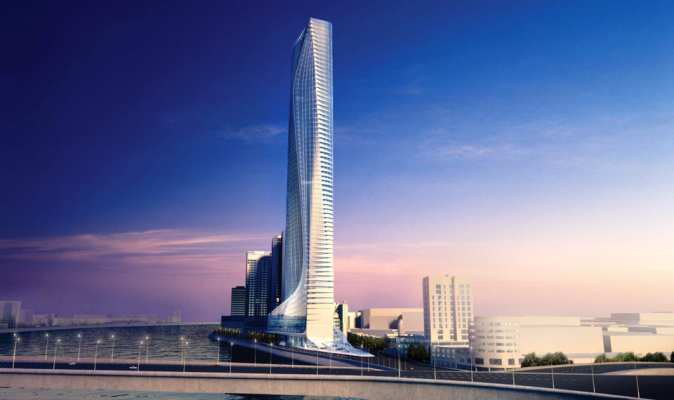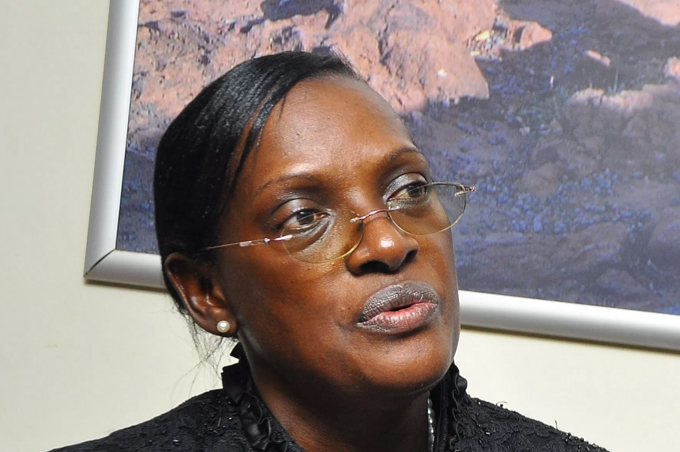On one of the last patches of land along the Nile River in central Cairo, Egypt is constructing Africa’s tallest building. In a difficult feat of engineering, the project will twist from a thin triangular base to form a rectangular skyscraper, rising 70 stories and providing a panoramic view of the Nile and—for the top floors—of the pyramids. It is meant as a monument with a message: after years of instability, Egypt is ready for investment.
Designed by the late architect Zaha Hadid in 2007, the “Nile Tower” will be part of a plan to transform the area between downtown Cairo and the Nile River into an upscale district. The bill for the project is set at $600 million, though it’s likely to cost nearly $150 million more according to Diaa Tantawy the Design Manager at Living In Interiors, the company developing the building. Right now, they face one main challenge. Tantawy explains,“The problem is in the Egyptian Pound.”
As Egypt pushes through economic reforms, the pound has weakened making imported building materials significantly more expensive. And yet despite the cost, developers are breaking ground because the construction sector is crucial to driving growth in the domestic economy and is key to the government’s plan for successful reforms. Currently, there are 1,400 active construction projects in Egypt valued at $248.2 billion. Farah Kamal, the PR Coordinator for Living In Interiors, says the building shows, “The Egyptian economy and the development of the country is started again.”
The New Building

The project was first championed a decade ago under former President of Egypt Hosni Mubarak, but was put on hold in the aftermath of the Revolution that ousted him from office in 2011. Now the building has gained support from current President Abdel Fattah al-Sisi, according to Living In Interiors President Ashraf El Tanani. He says that President Sisi is very keen on the project and that the government is working with Living In Interiors to get proper clearance for design aspects like the building’s height. In terms of making it financially viable, El Tanani says that he is currently speaking to investors from across Europe. “This is very important for the economy right now in Egypt,” he says.
The Nile Tower is meant to transmit that message of growth outside the country. Says Tantawy, “It will change how the whole world sees Egypt. We are now strong, the leader of Africa and the Middle East, you can invest with us.”
Investment comes with a luxury pricetag. According to the Tower’s current plan, the top 36 floors will be apartments, the middle 18 floors will be a hotel with approximately 230 keys and the remaining floors below will be reserved for amenities like a casino, night club, spa, health club and shopping area. Tantawy guesses the apartments will be very expensive, standing in contrast to much of the housing currently in the area.
The New Modern Cairo
The revamping of the area between downtown and the Nile River is intended to bring investment back to the heart of Cairo. Over the past few decades, upscale residences and businesses have moved to settlements on the outskirts of the city. As wealth has shifted outwards, middle class and low income tenants remained in the heart of Cairo. However, as new luxury sites are proposed, current residents will either be removed or priced out.
Across the road from the Nile Tower, is a low-income area called the Maspero Triangle which the government has planned for years to redevelop. In 2013, during the wake of the revolution, then Minister of Housing Laila Iskandar worked with local architects and residents to create an inclusive development plan for the area. However, in 2015, Iskandar was replaced by Mostafa Madbouly, a key component of the Cairo 2050 plan under Mubarak, and a champion of projects that flip impoverished neighborhoods into business parks, according to the Guardian. Iskandar’s plan was lost.
This spring, the government demolished low-income housing in the Maspero Triangle to make room for an upscale mixed-used development designed by British firm Foster + Partners that is criticized for excluding both the neighborhood’s community and heritage. In the process, approximately 4,300 families were given a choice of compensation plans and removed from the area.
As a developer, Tantawy supports that decision. He says it would be too hard to develop the place as is, so it’s necessary to remove the current community and start from scratch. As the government follows through with the first stages of redevelopment, Tantawy says its the right time to start the Nile Tower.
The demolition site along with the low income community behind the Nile Tower won’t be visible from the Tower itself. The building is designed with a glass facade in front, and shades in the back, shielding tenants from the development.
Over the next few years, Tantawy says the Maspero Space will be the “new modern Cairo.” However, the Nile Tower also shows that this new Cairo has roots in the past. As projects planned before the revolution rise into the sky, development plans are picking up where it left off.
Credit: Forbes





